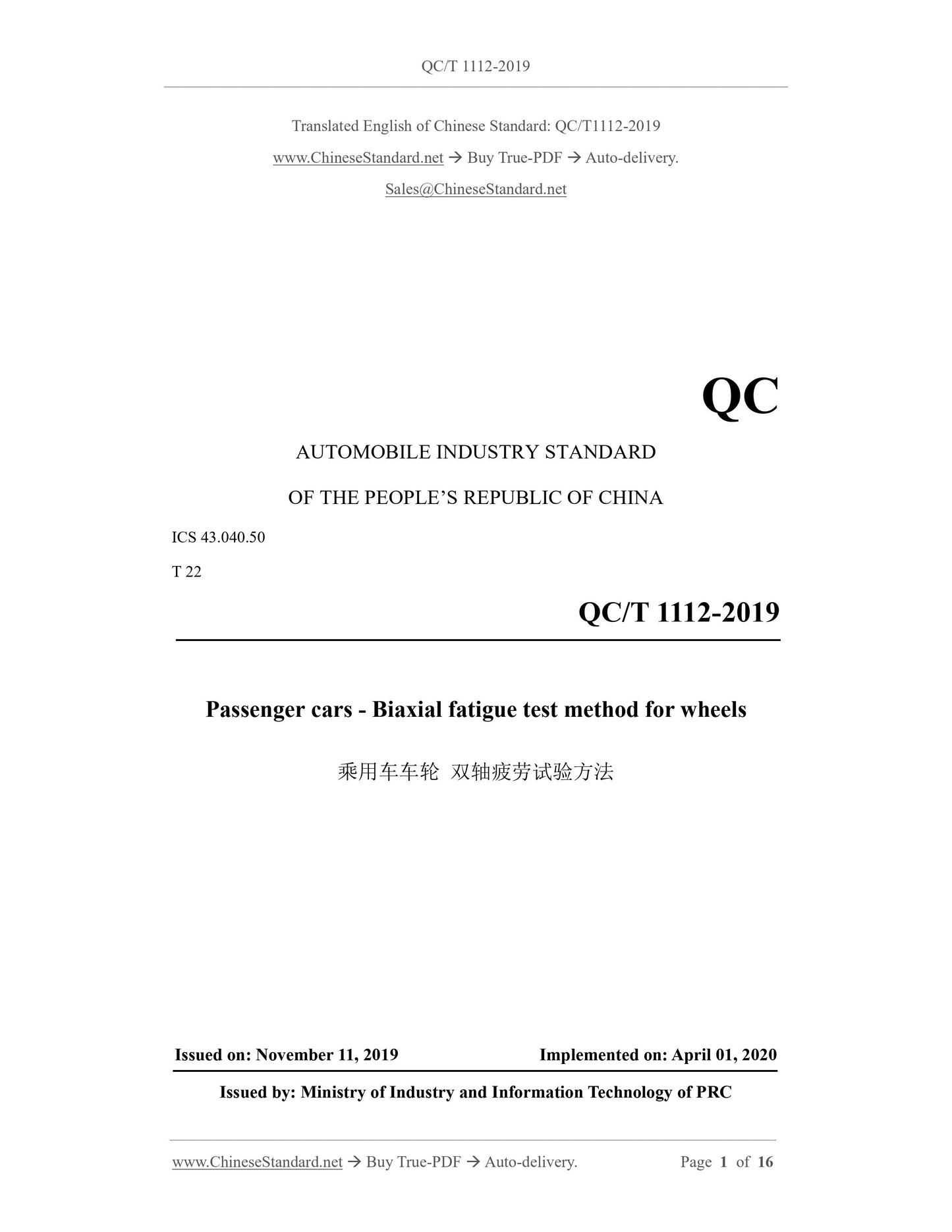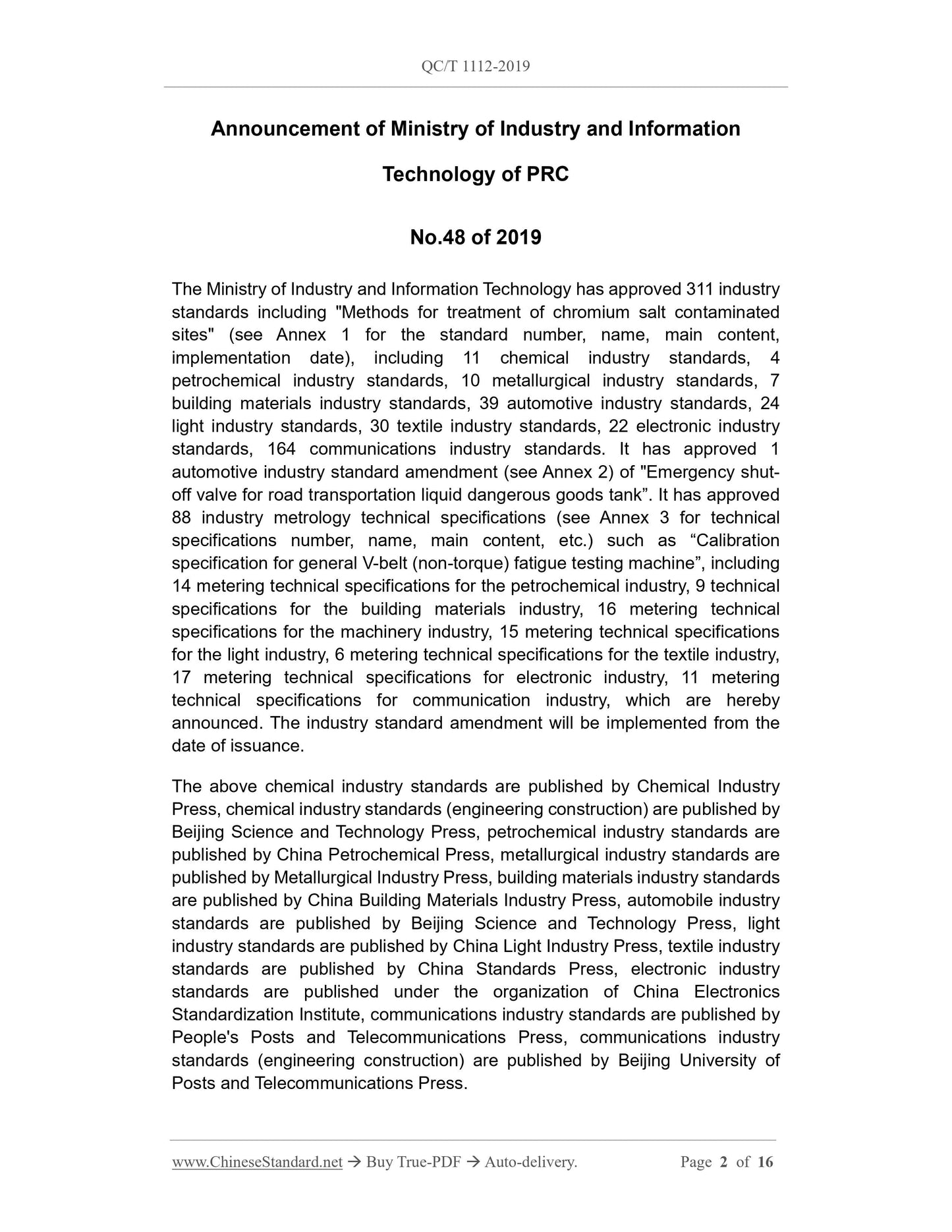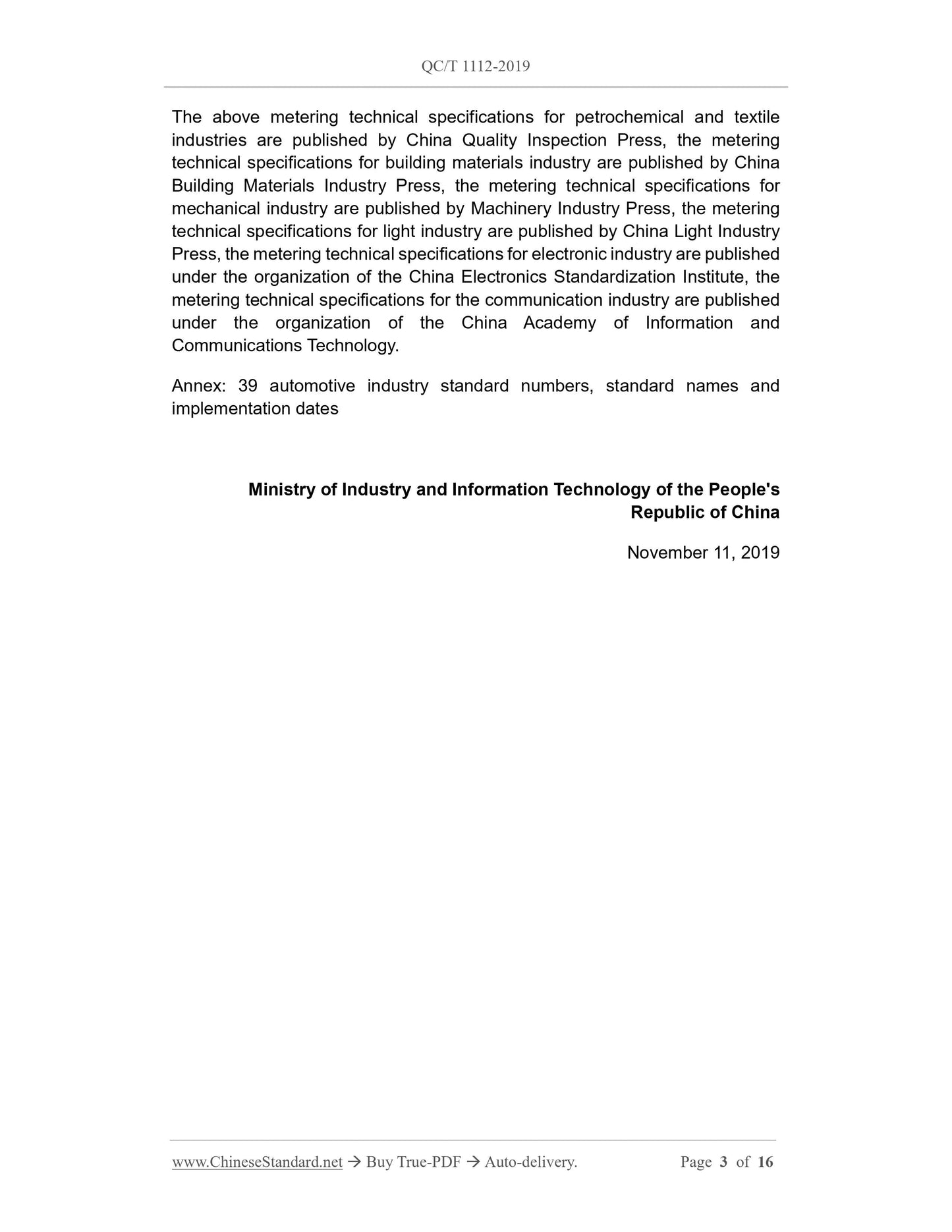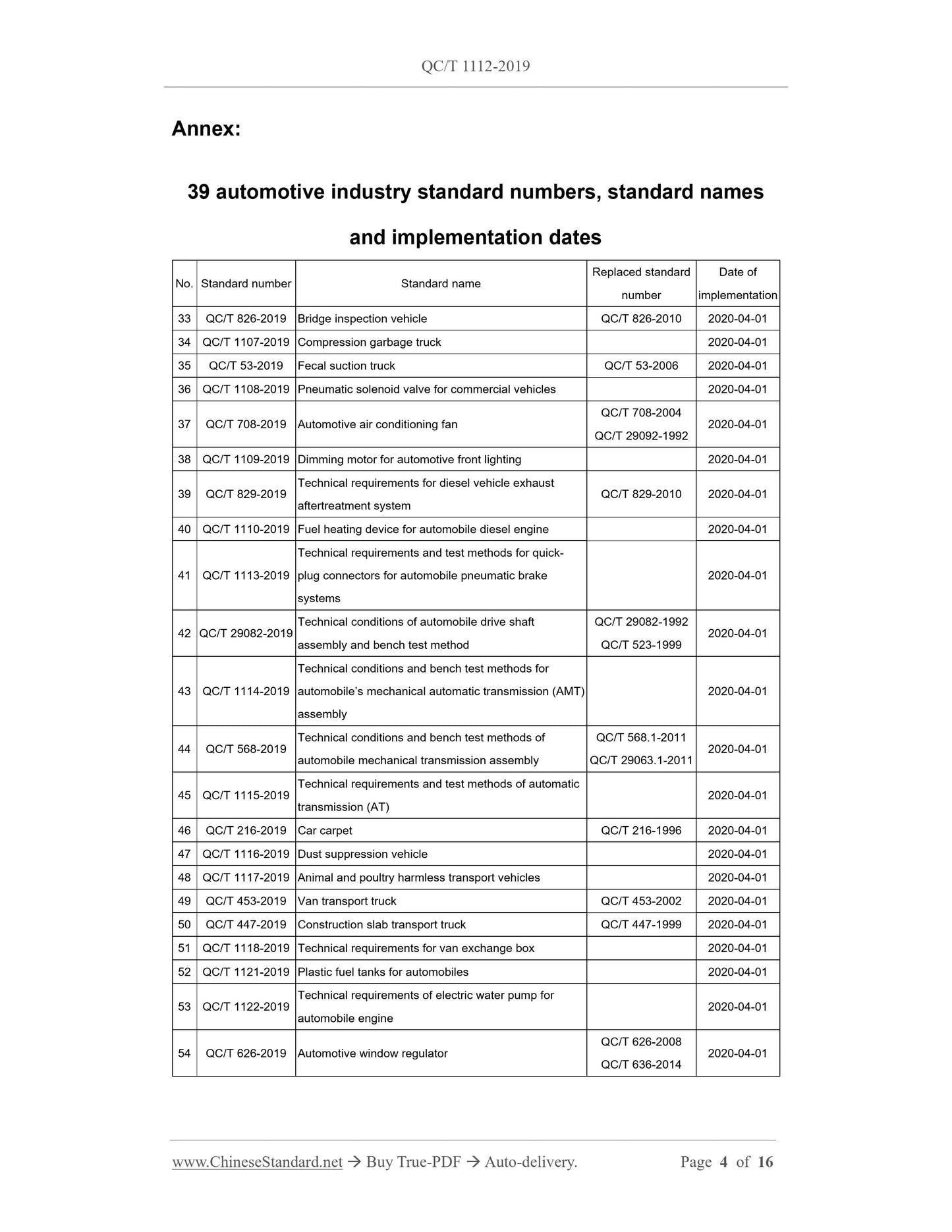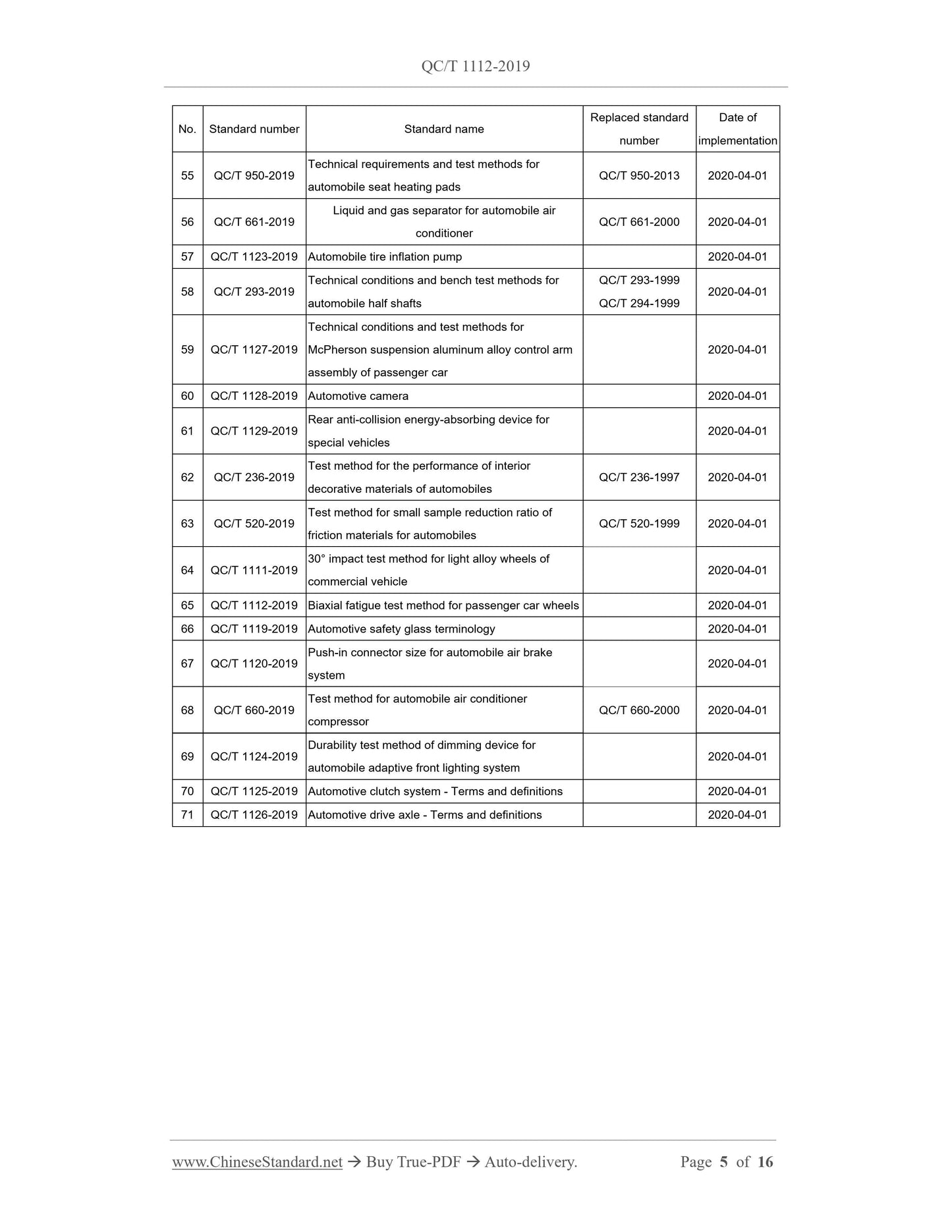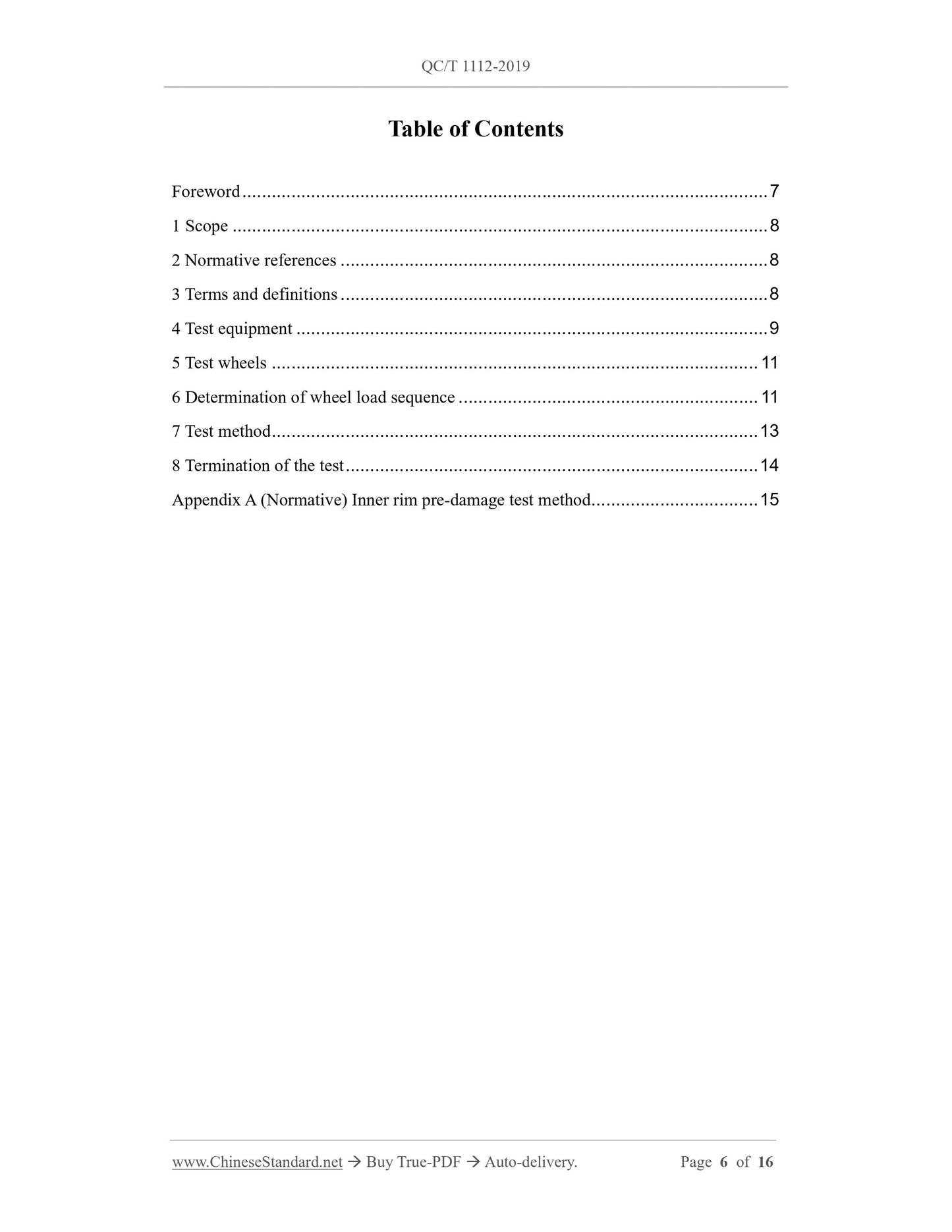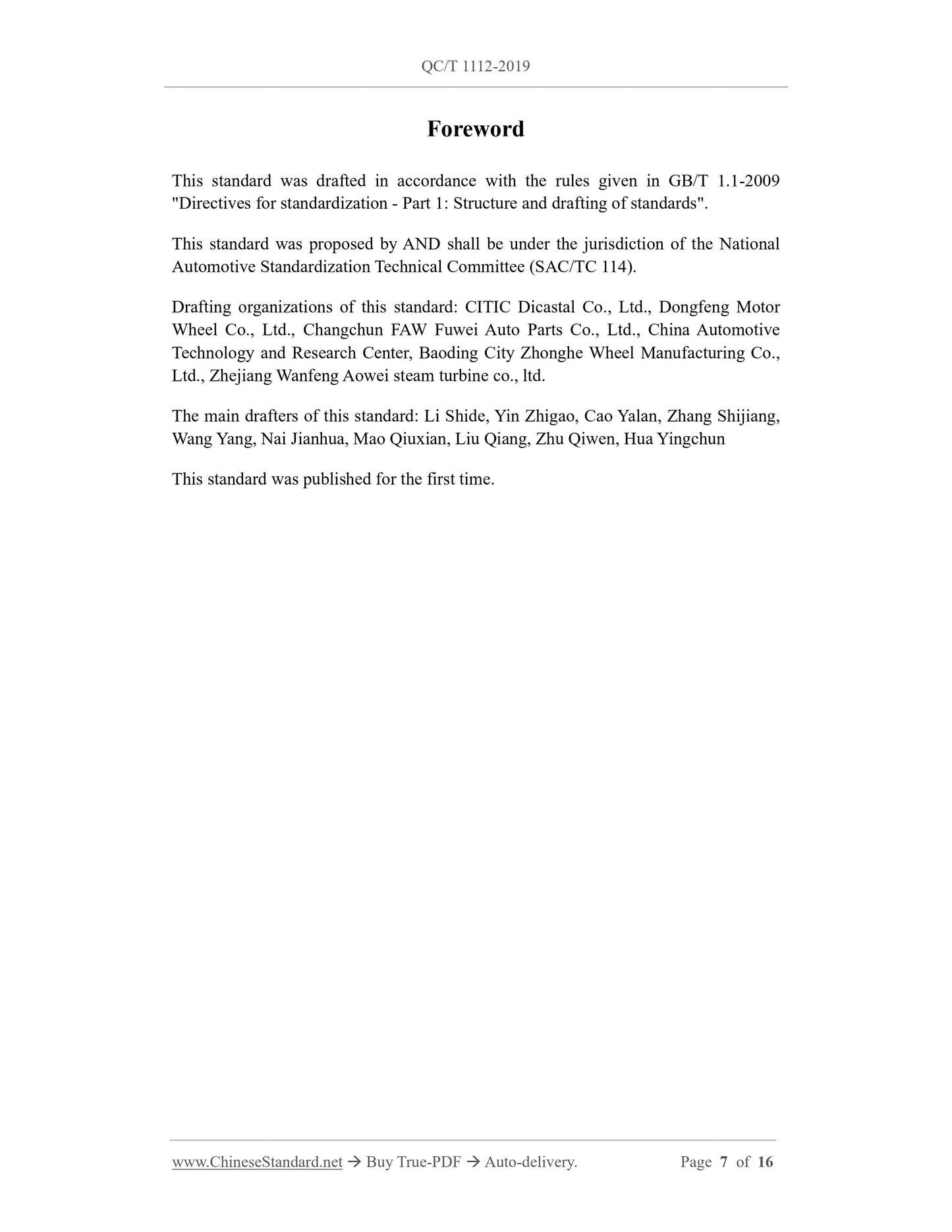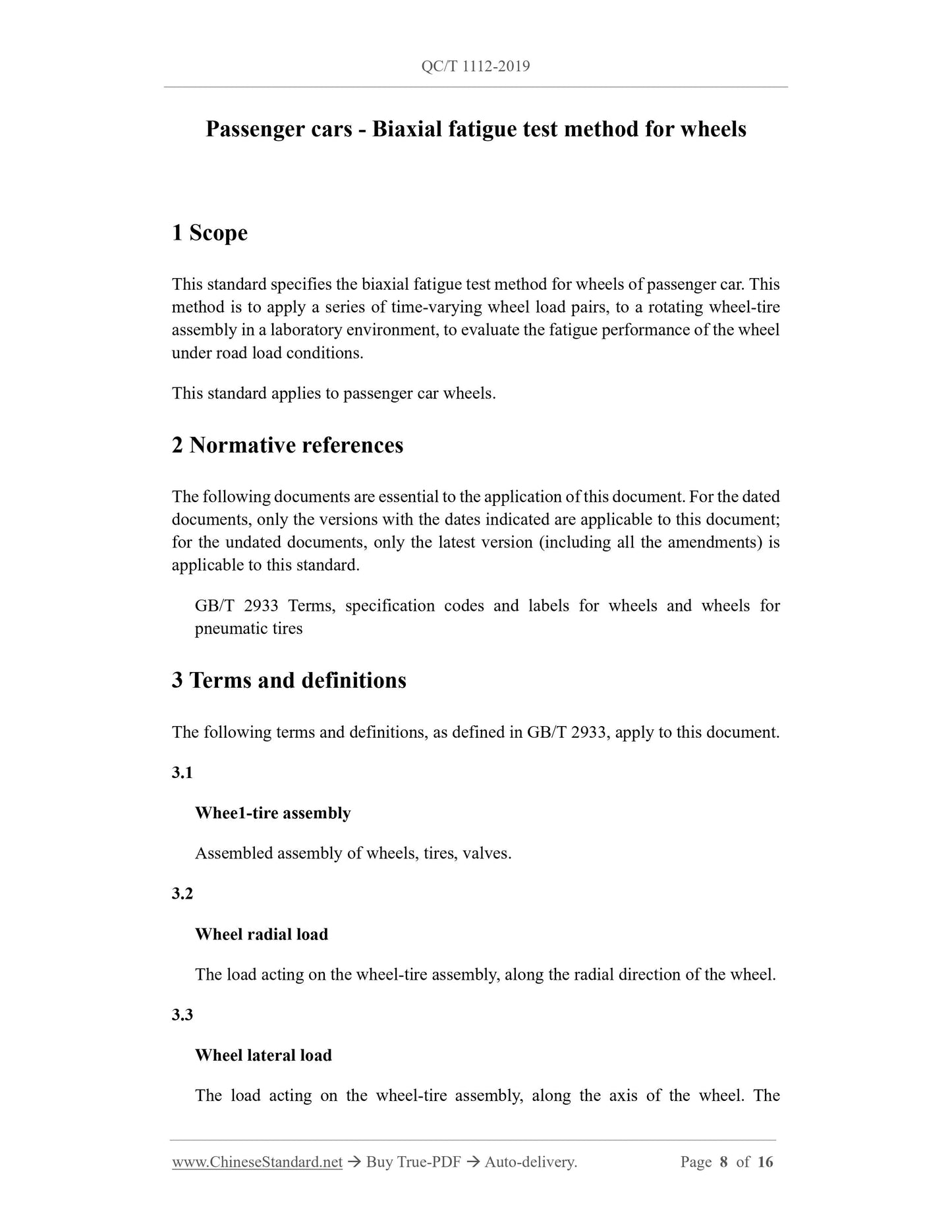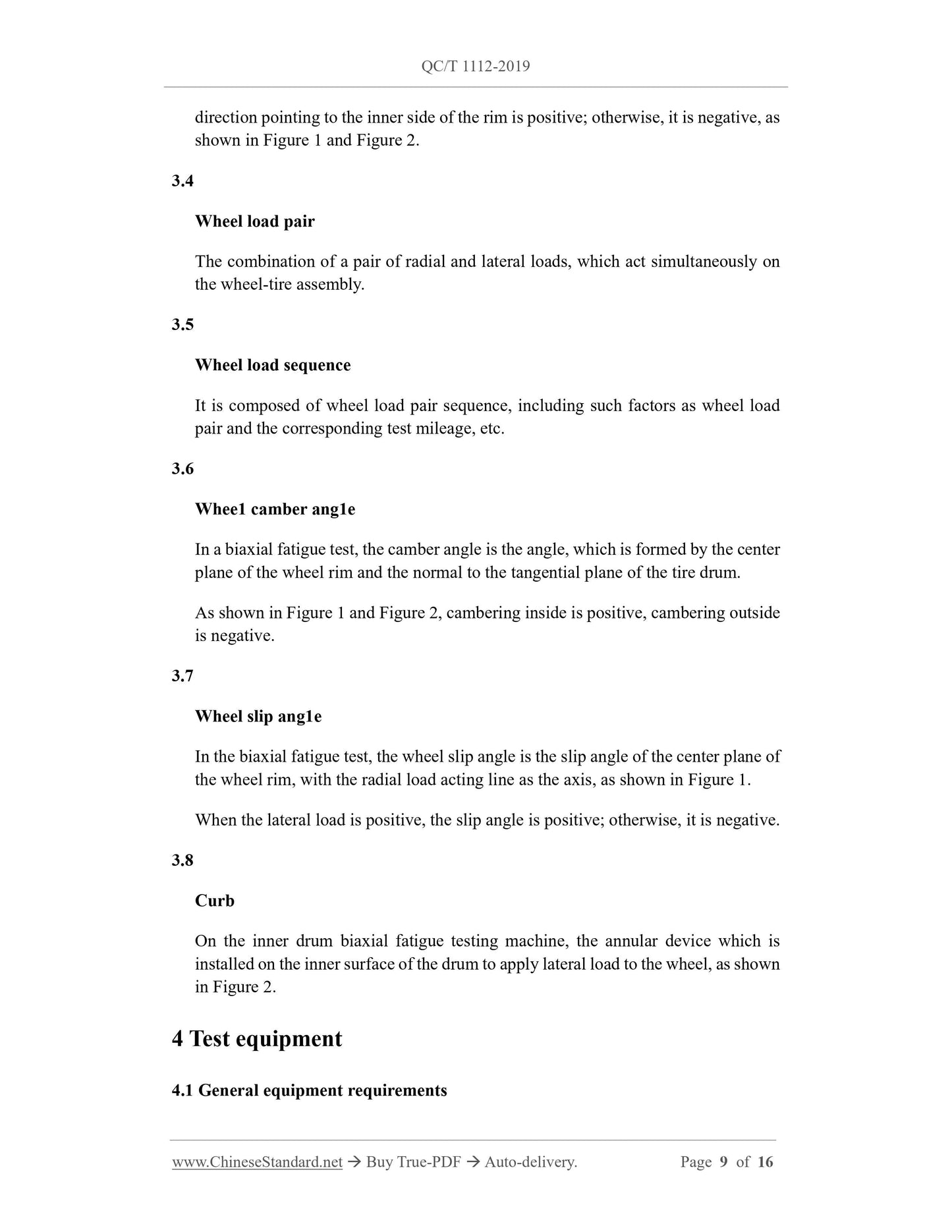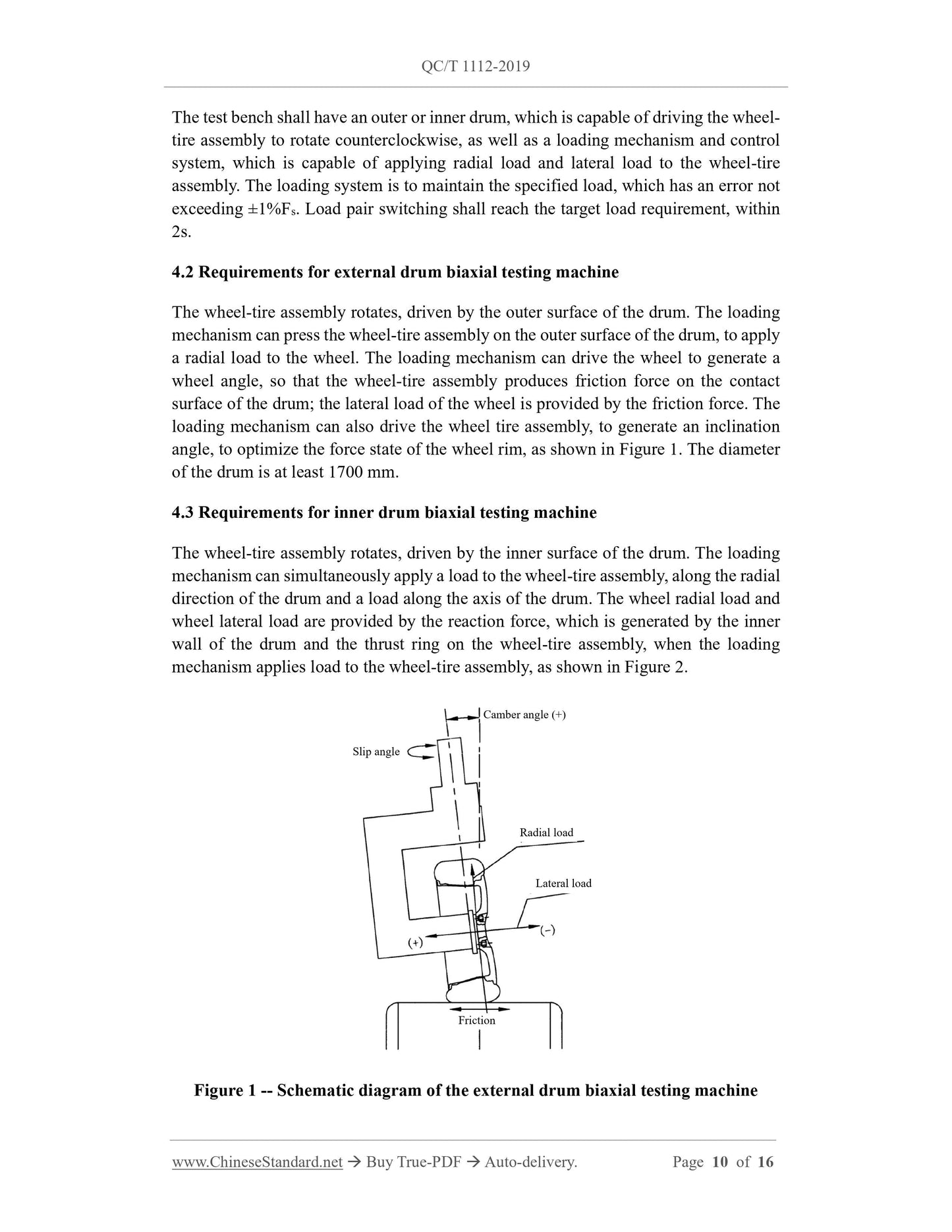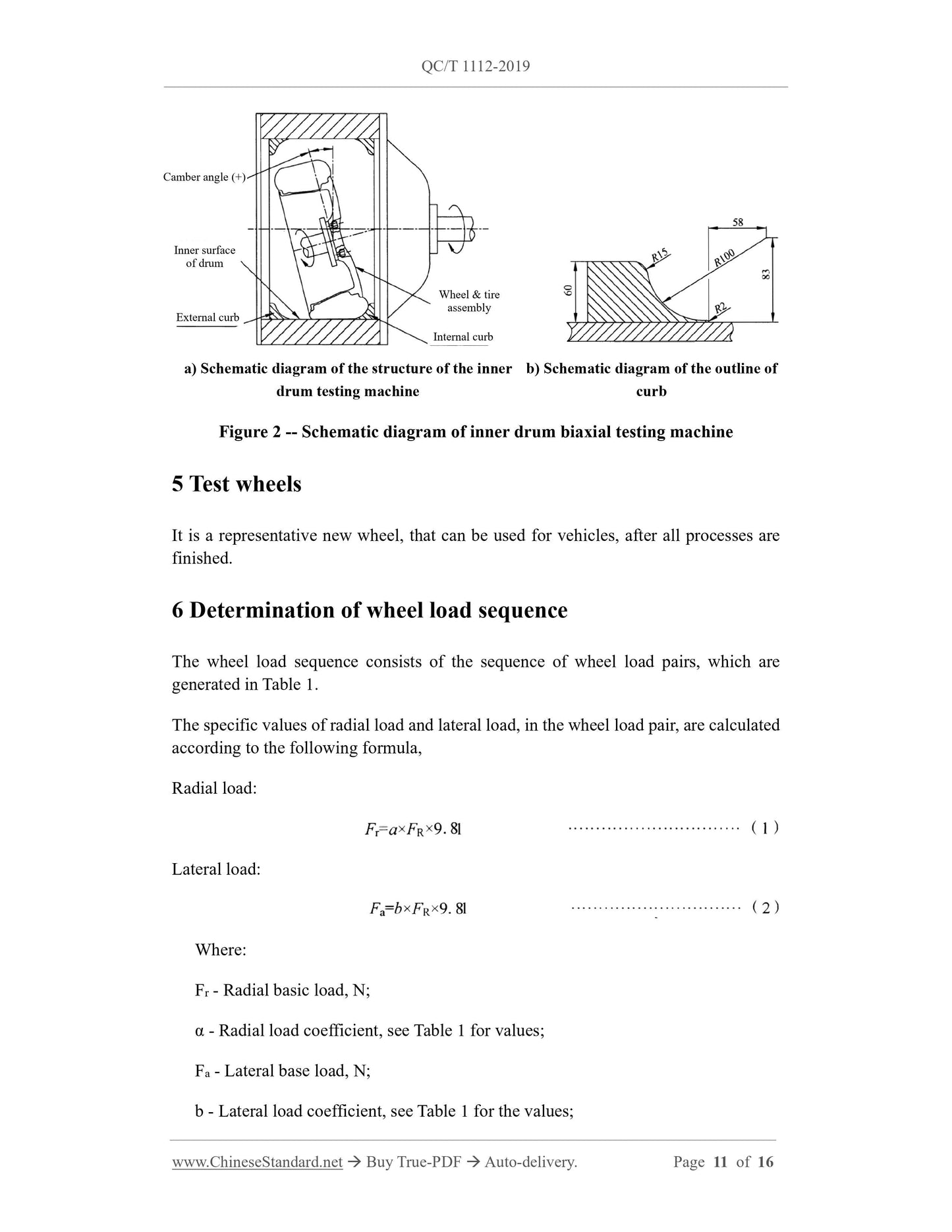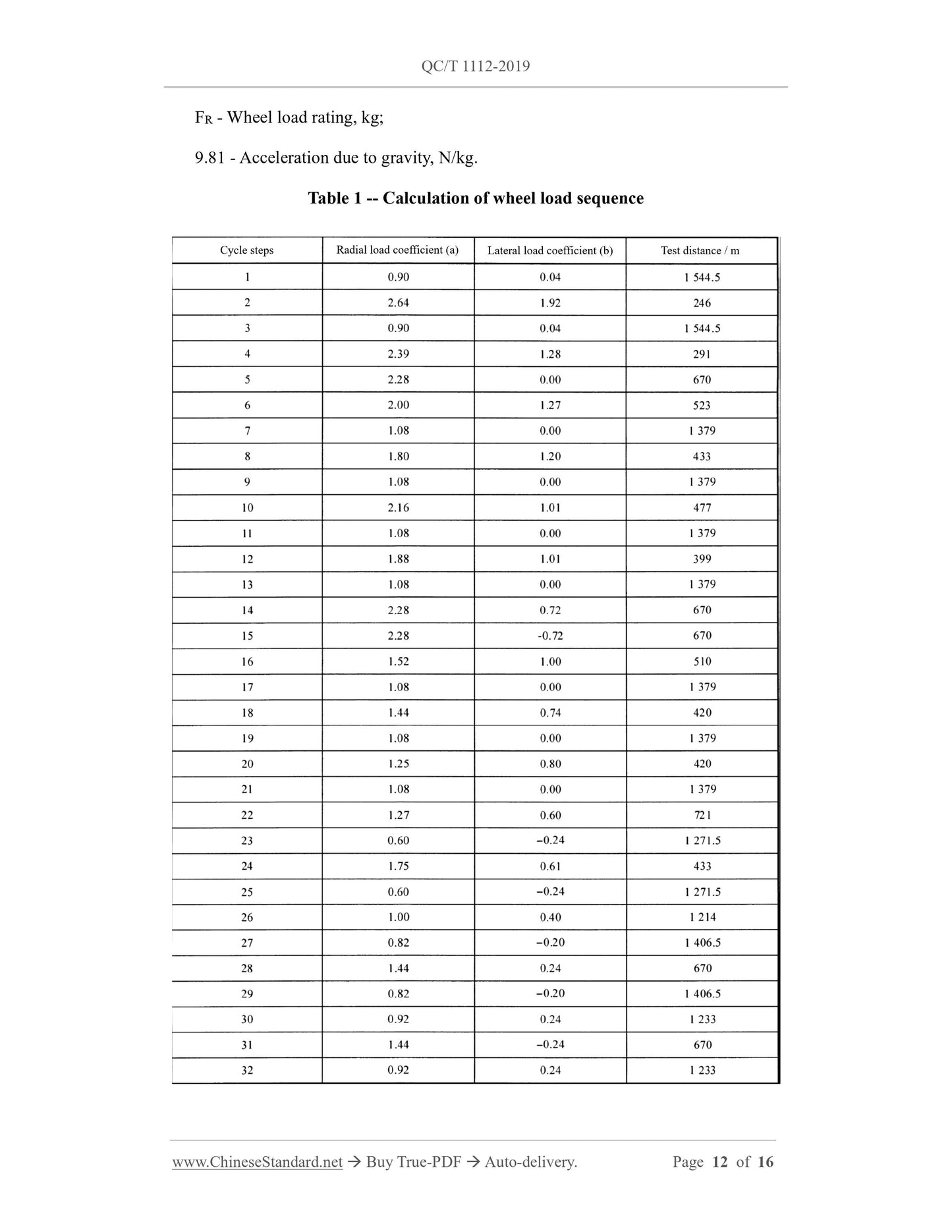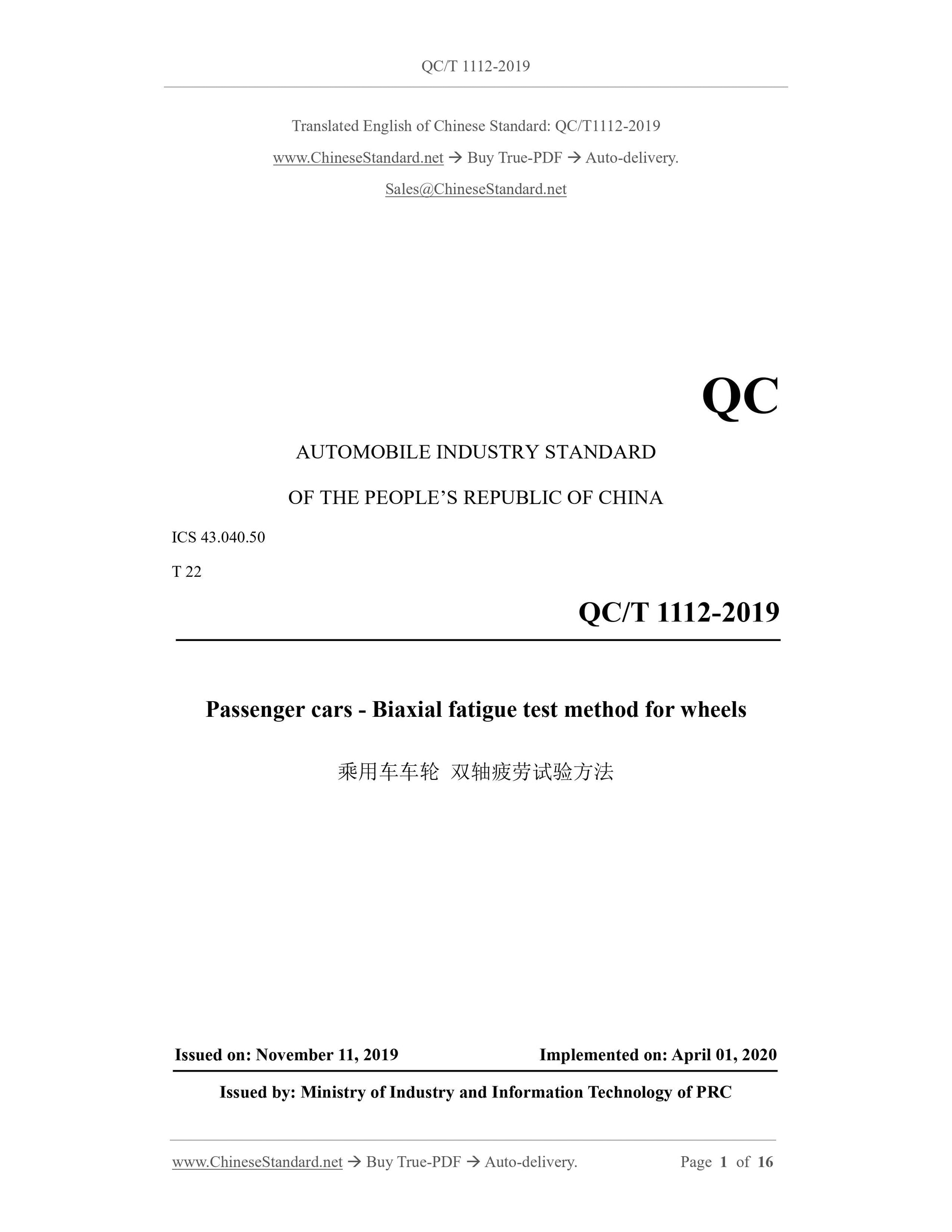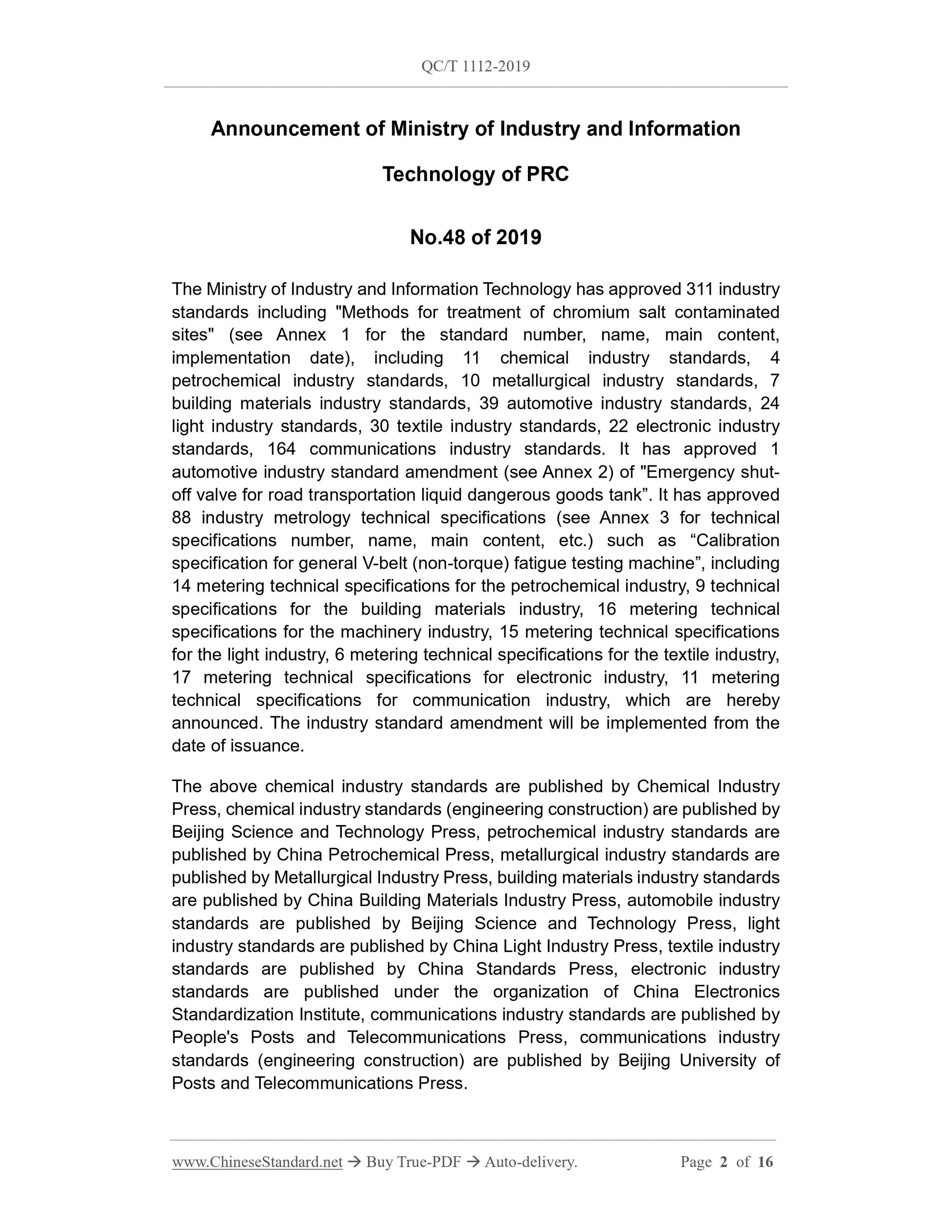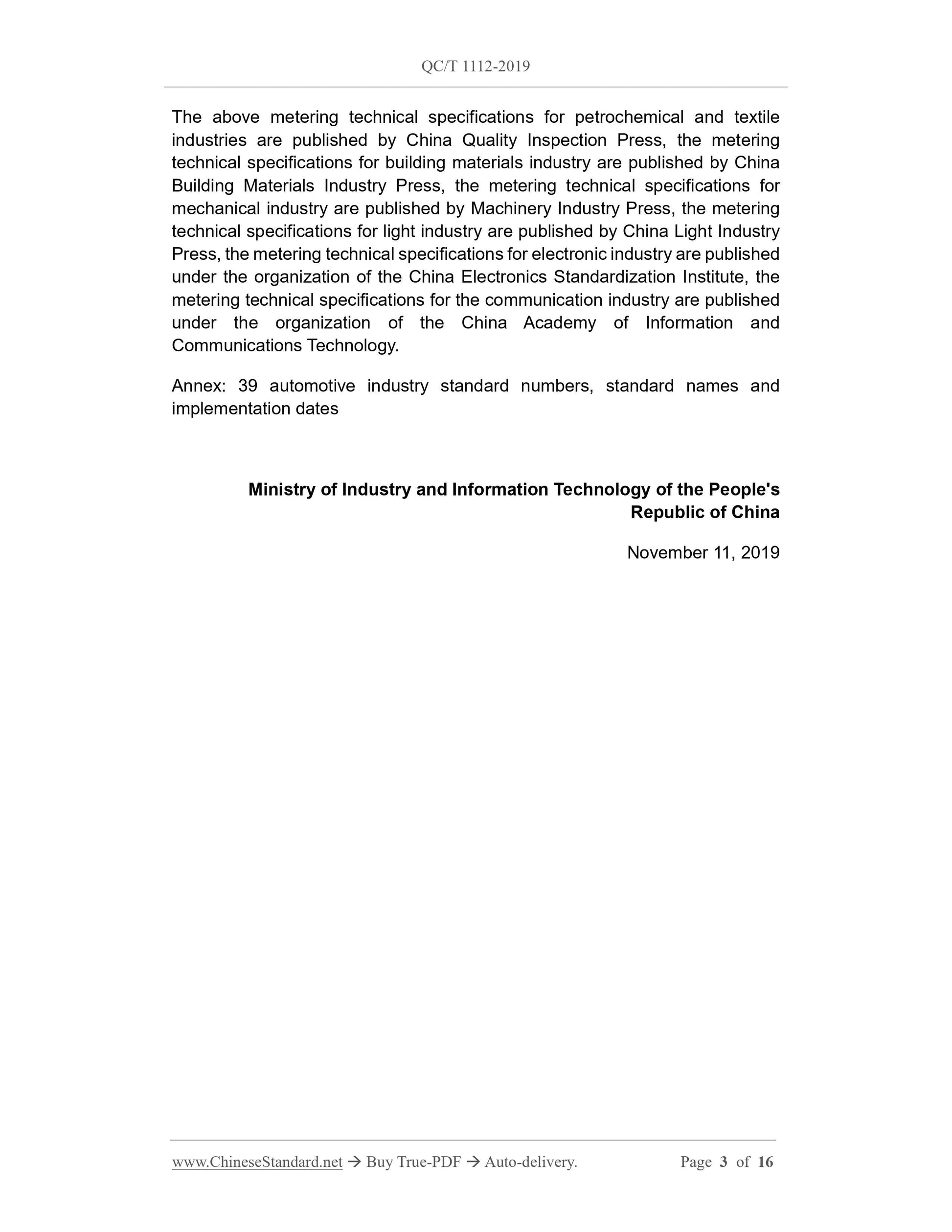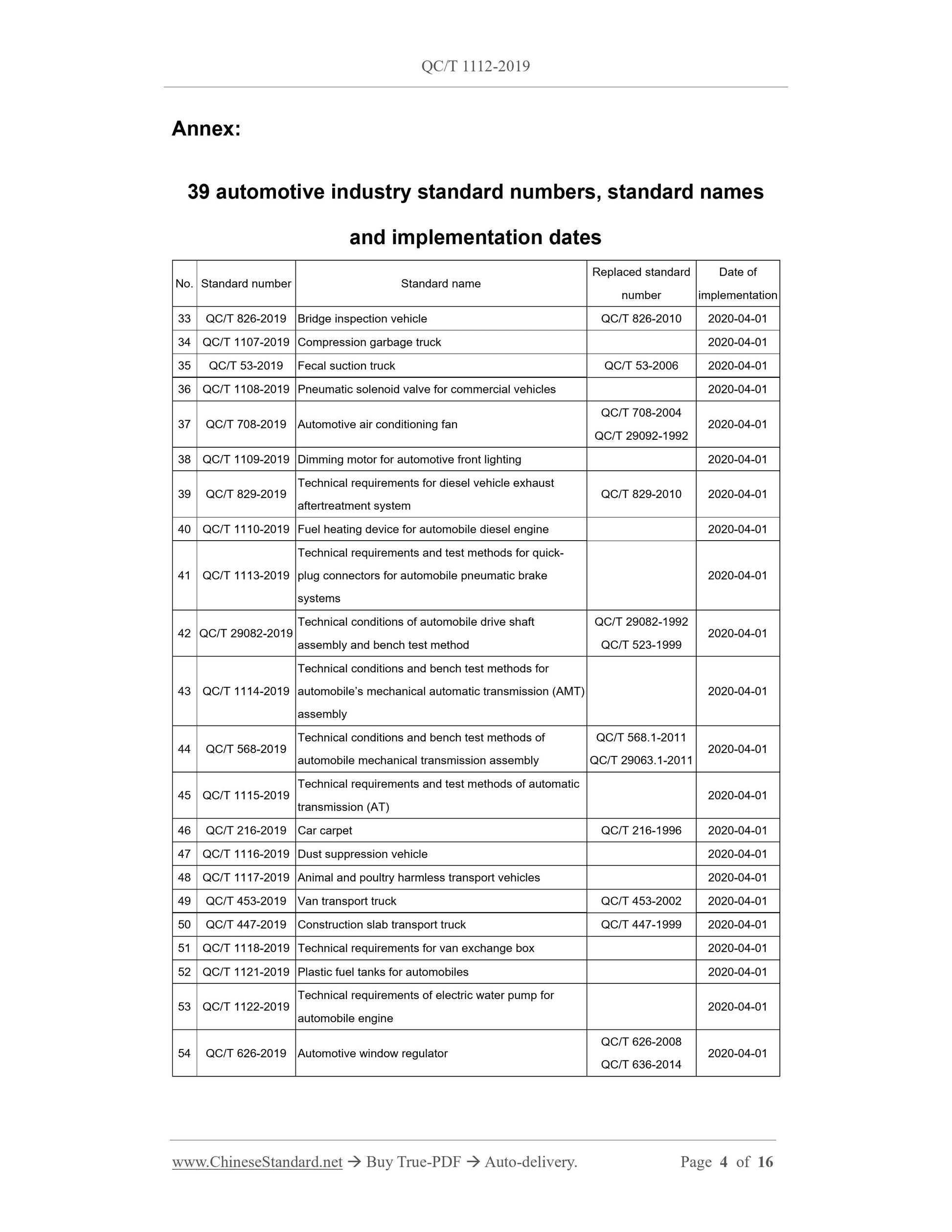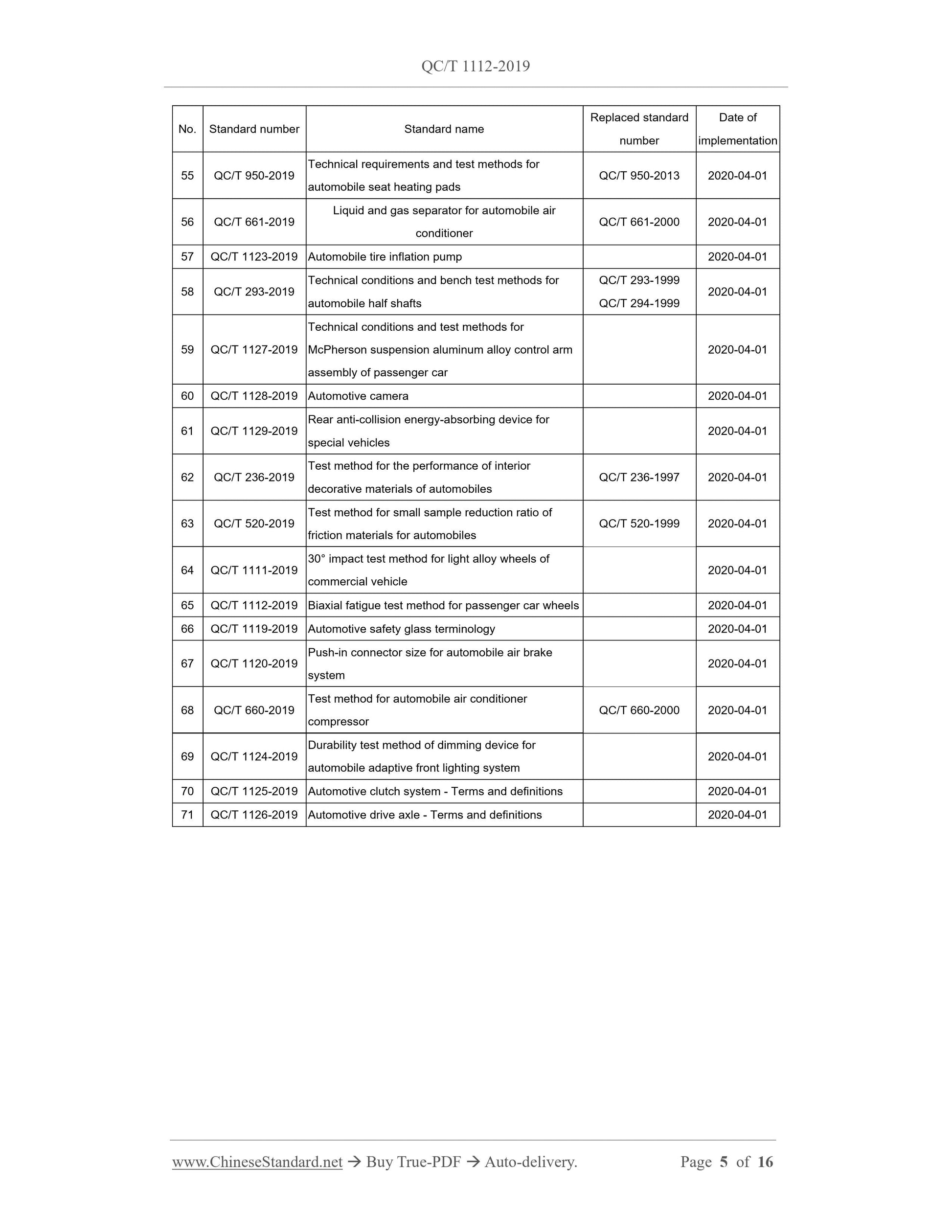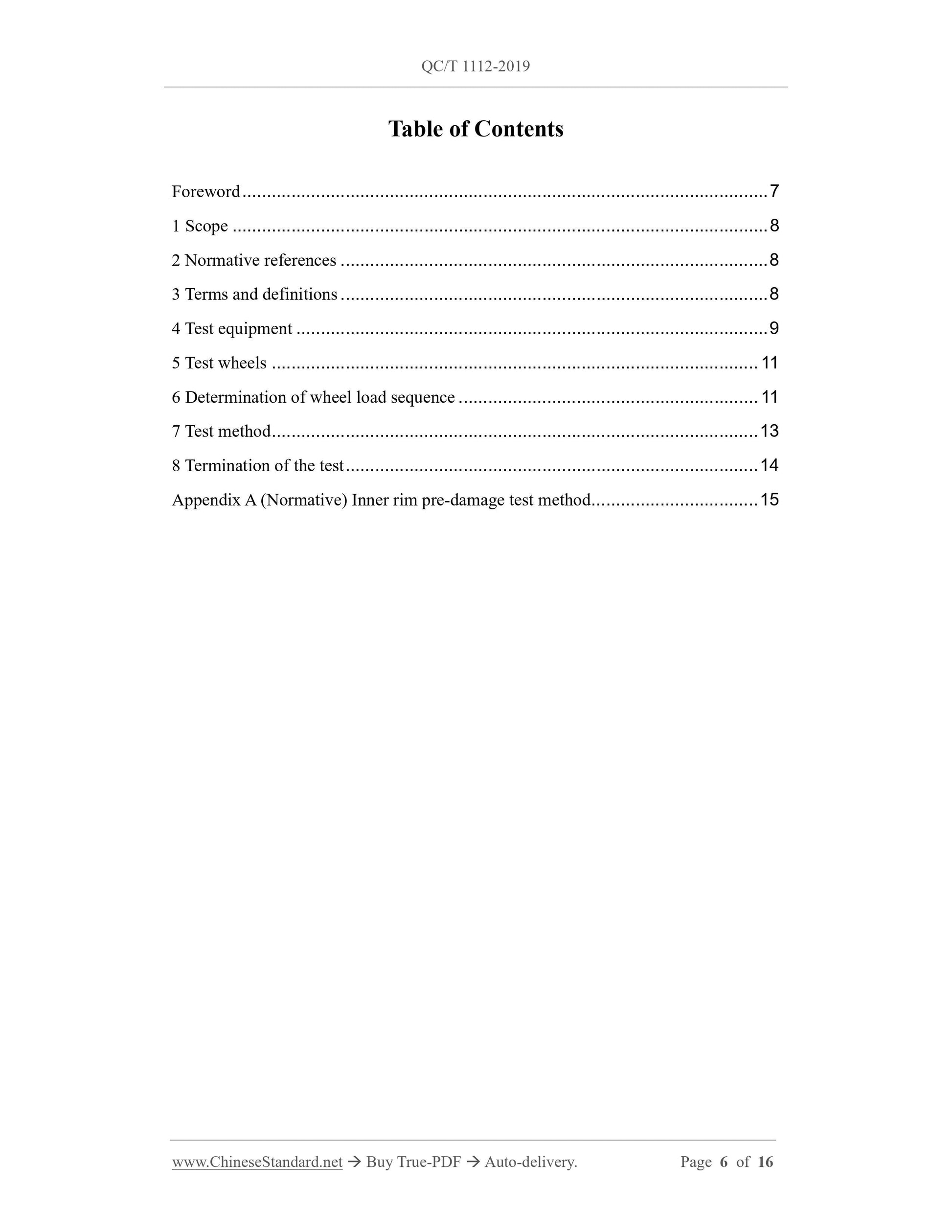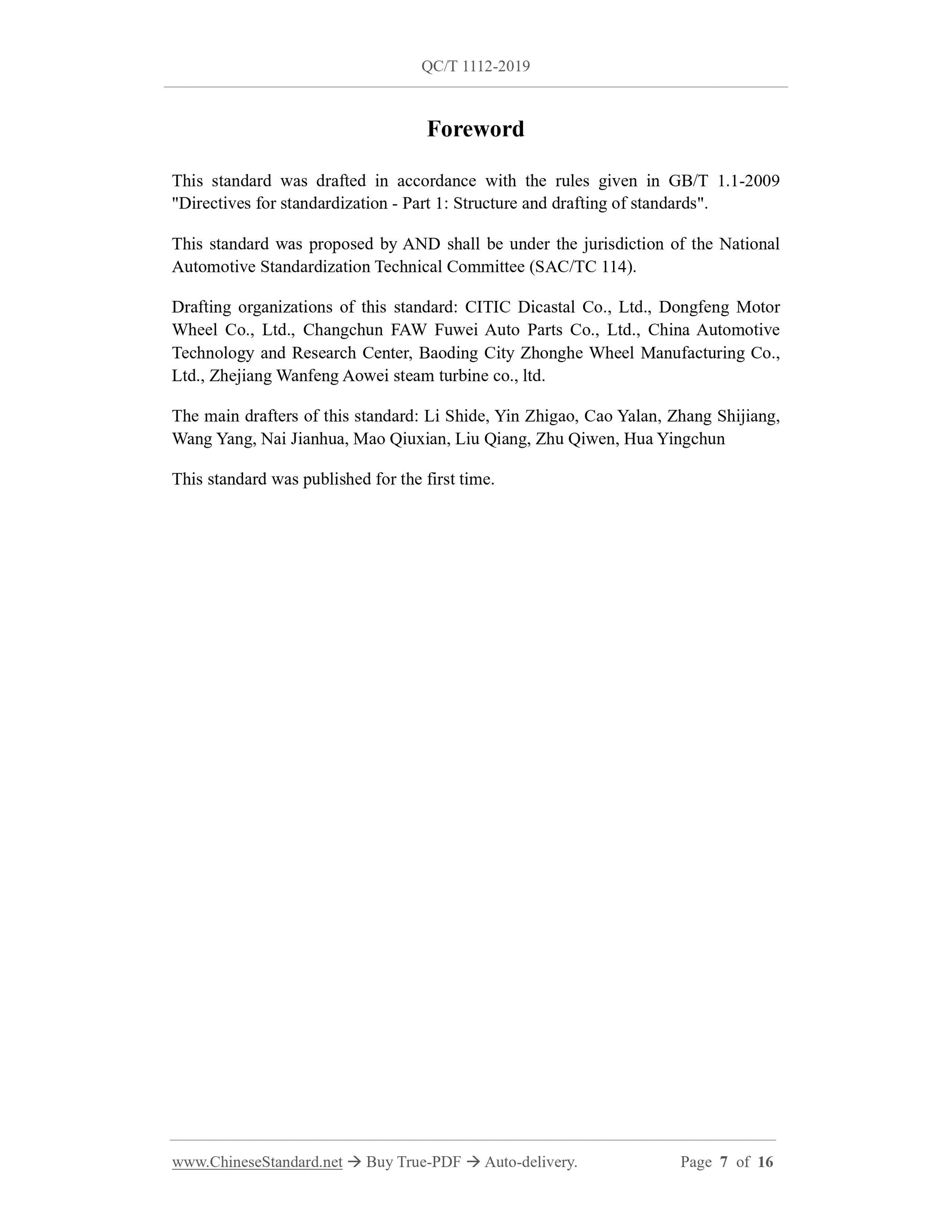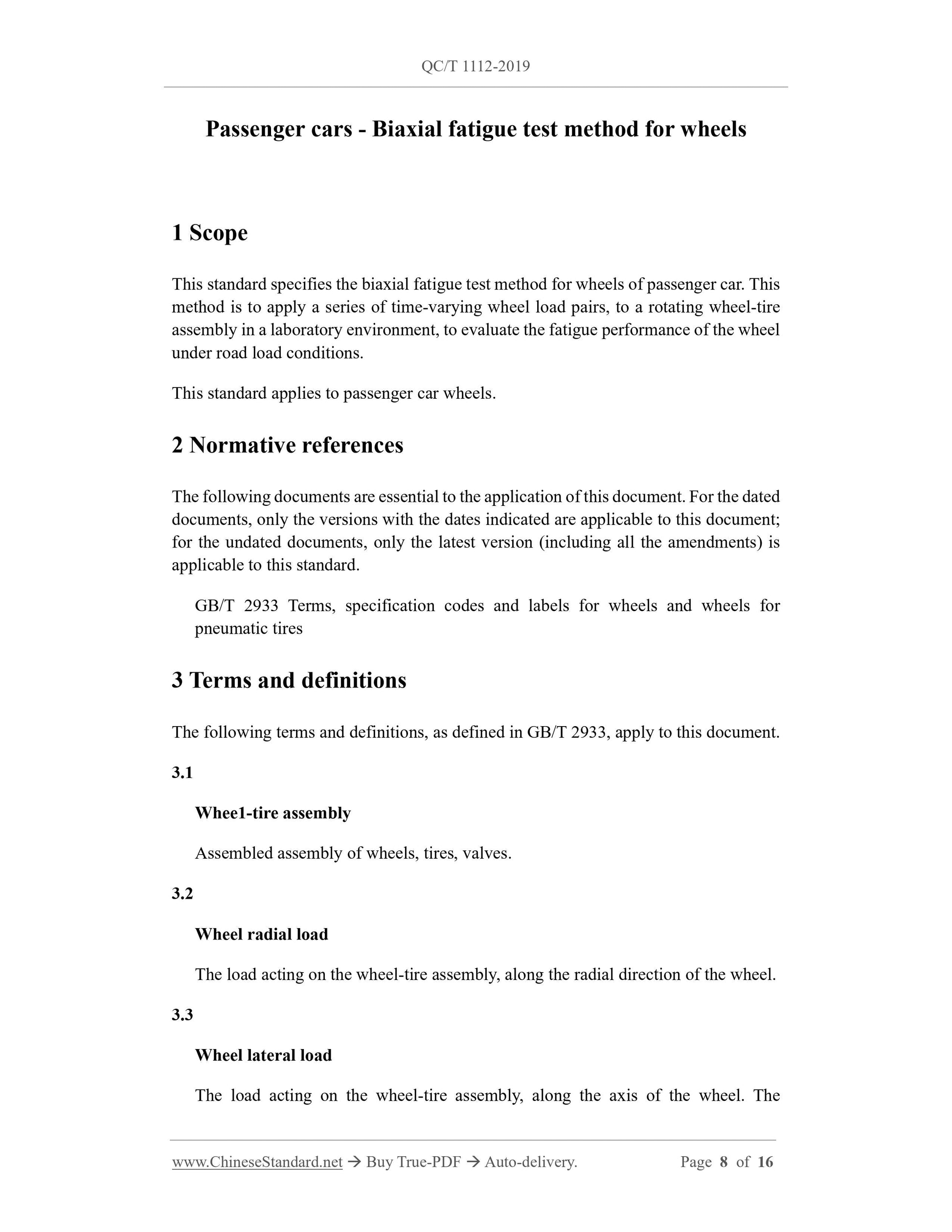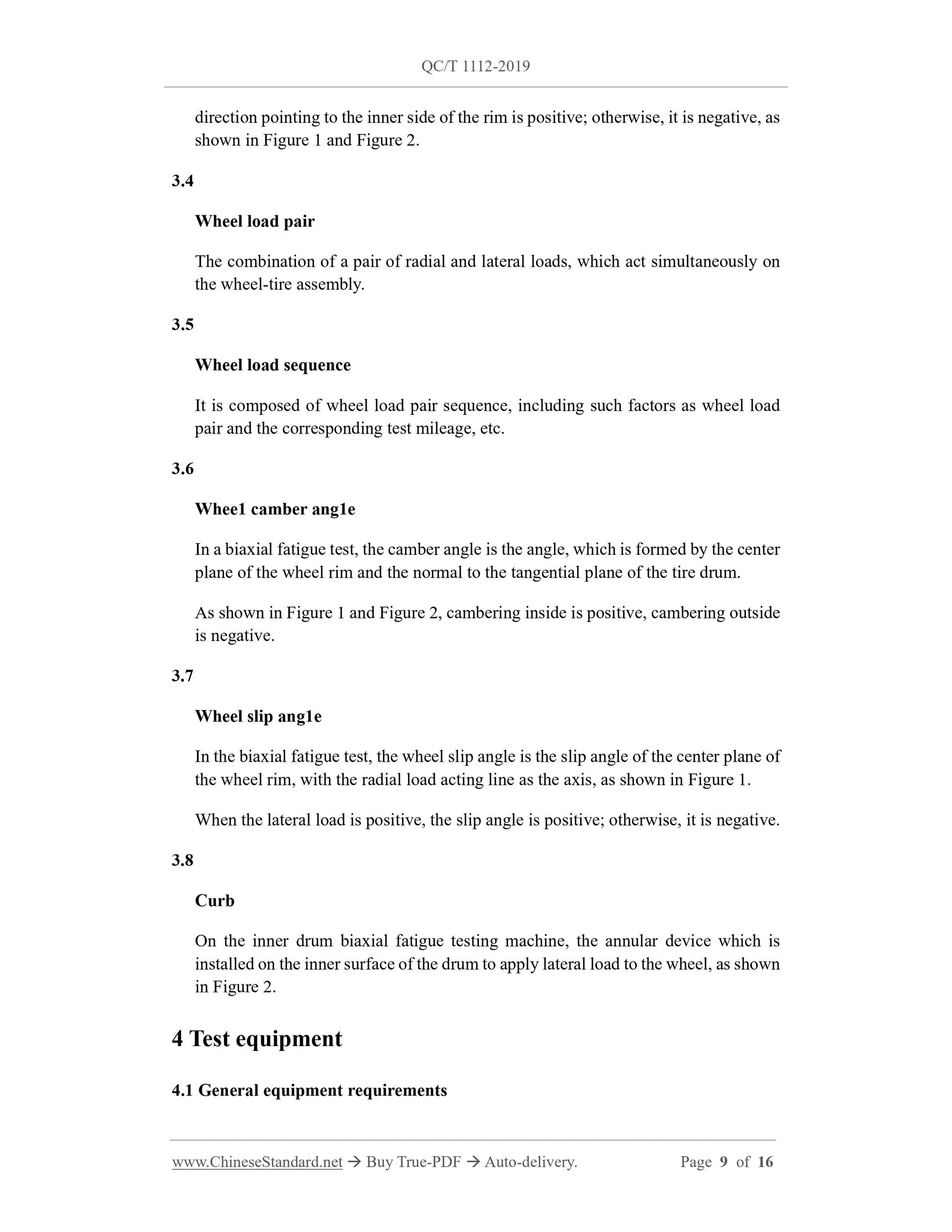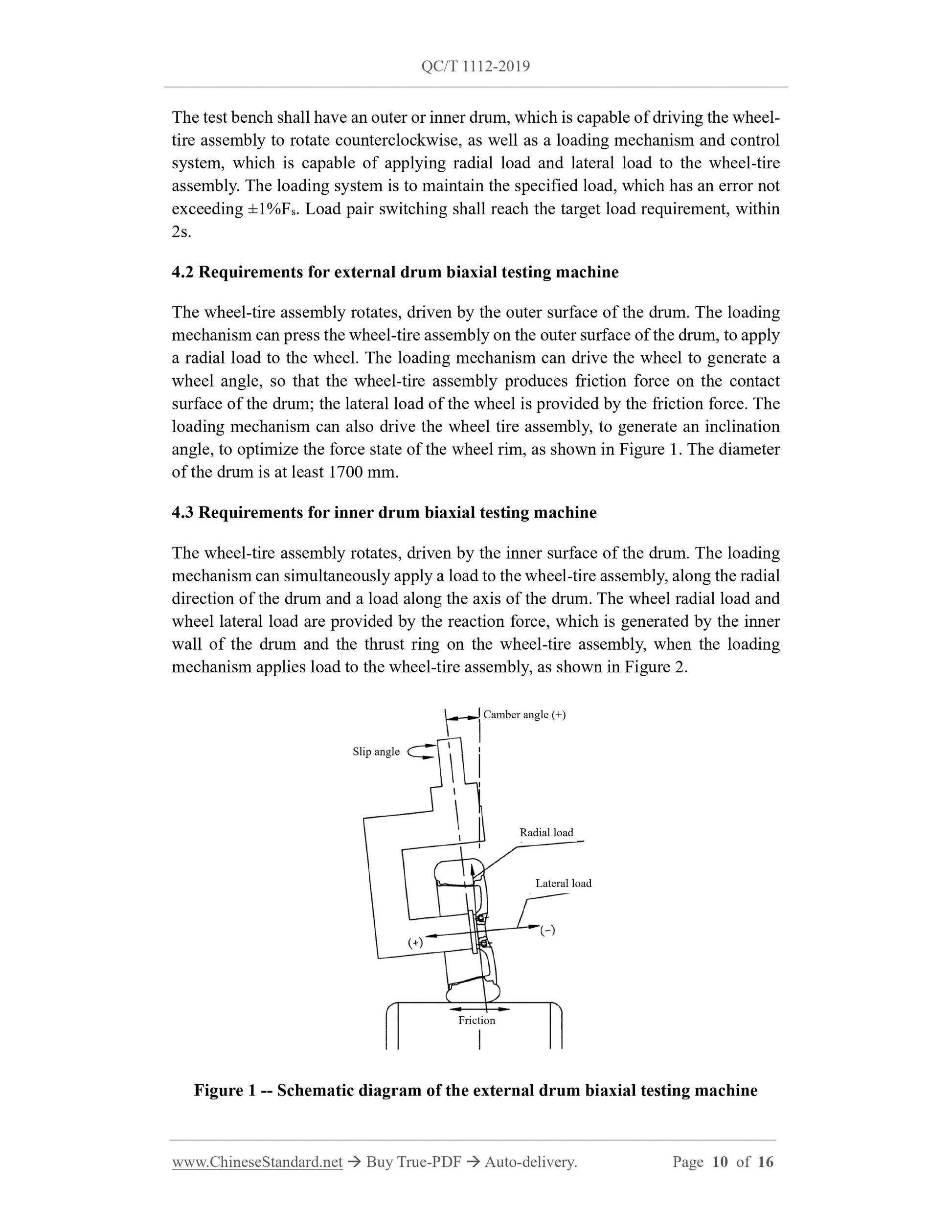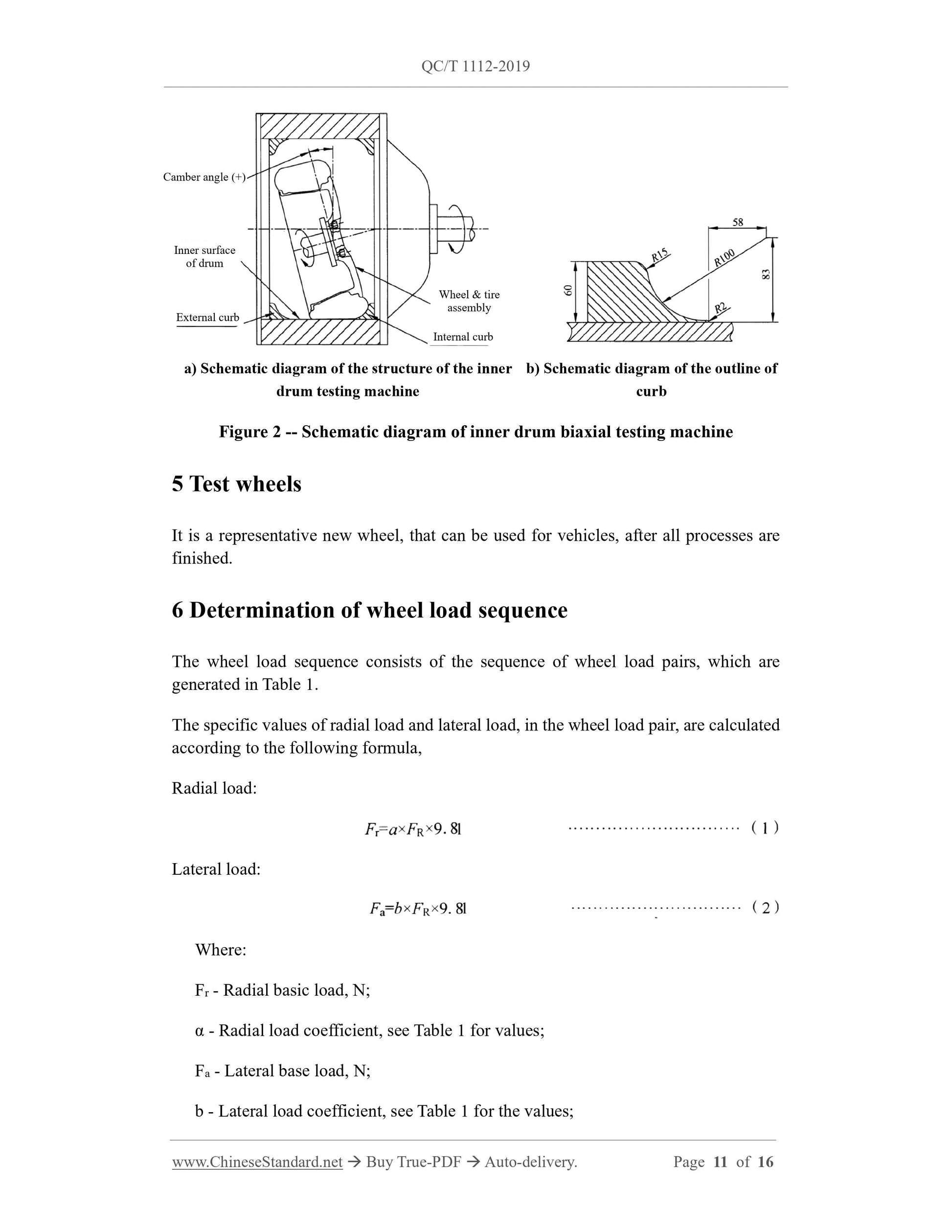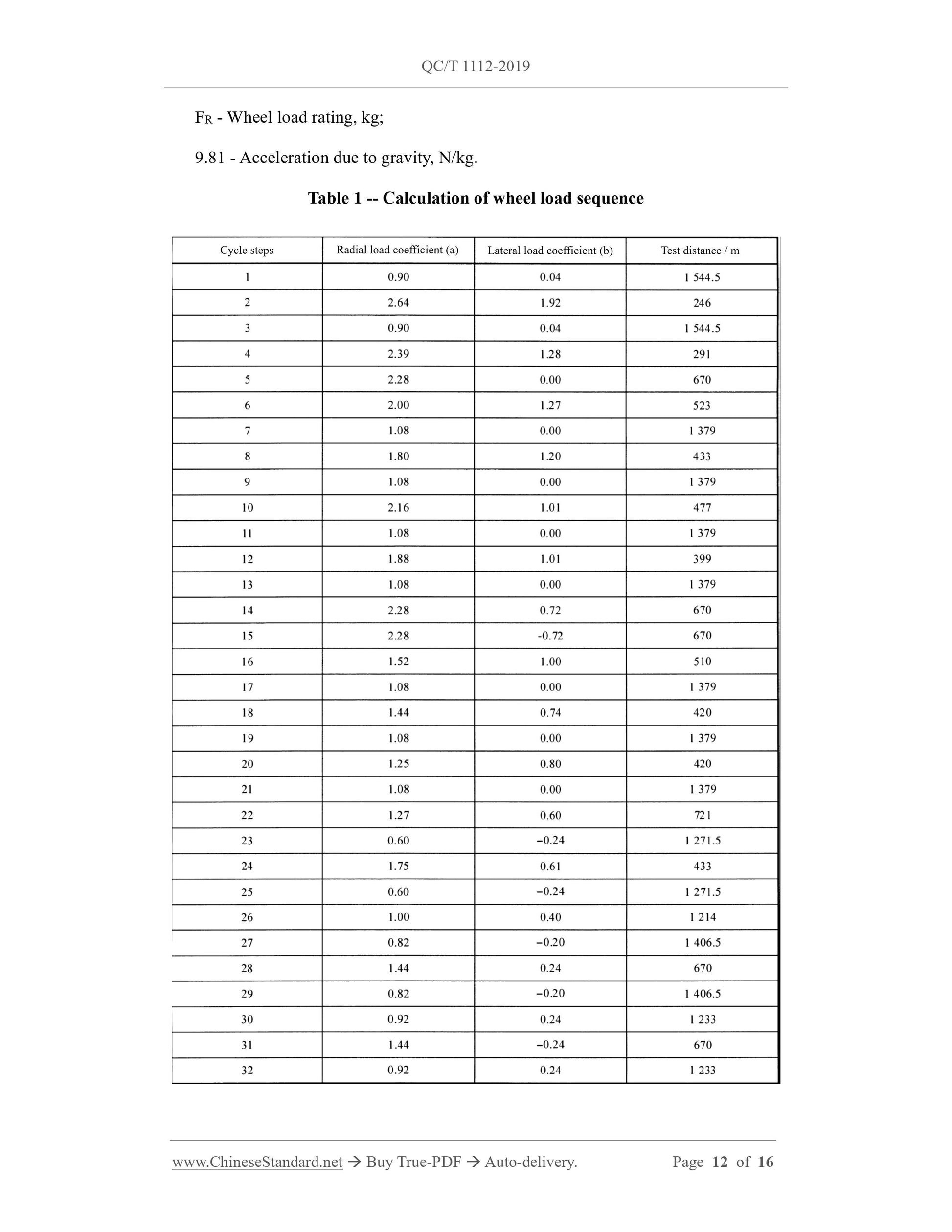1
/
of
12
www.ChineseStandard.us -- Field Test Asia Pte. Ltd.
QC/T 1112-2019 English PDF (QC/T1112-2019)
QC/T 1112-2019 English PDF (QC/T1112-2019)
Regular price
$235.00
Regular price
Sale price
$235.00
Unit price
/
per
Shipping calculated at checkout.
Couldn't load pickup availability
QC/T 1112-2019: Passenger cars-biaxial fatigue test method for wheels
Delivery: 9 seconds. Download (and Email) true-PDF + Invoice.Get Quotation: Click QC/T 1112-2019 (Self-service in 1-minute)
Newer / historical versions: QC/T 1112-2019
Preview True-PDF
Scope
This standard specifies the biaxial fatigue test method for wheels of passenger car. Thismethod is to apply a series of time-varying wheel load pairs, to a rotating wheel-tire
assembly in a laboratory environment, to evaluate the fatigue performance of the wheel
under road load conditions.
This standard applies to passenger car wheels.
Basic Data
| Standard ID | QC/T 1112-2019 (QC/T1112-2019) |
| Description (Translated English) | Passenger cars-biaxial fatigue test method for wheels |
| Sector / Industry | Automobile and Vehicle Industry Standard (Recommended) |
| Classification of Chinese Standard | T22 |
| Classification of International Standard | 43.040.50 |
| Word Count Estimation | 14,148 |
| Date of Issue | 2019 |
| Date of Implementation | 2020-04-01 |
| Issuing agency(ies) | Ministry of Industry and Information Technology |
| Summary | This standard specifies the biaxial fatigue test method for passenger car wheels. The method is to apply a series of time-varying wheel load pairs to a rotating wheel and tire assembly in a laboratory environment to assess the fatigue performance of the wheel under road load conditions. This standard applies to passenger car wheels. |
Share
